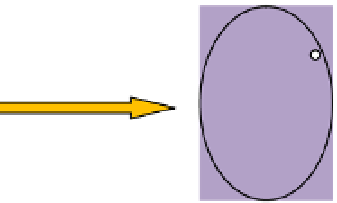Biomedical Engineering Reference
In-Depth Information
It was shown that the application of ozonation treatment on waste sludge could induce
substantial reduction in the volume of sludge and the release of intracellular and extracellular
materials [26]. With the increase of ozone dose to above 0.04 g O
3
/g MLSS [27,28], the
structure of sludge flocs could be disintegrated completely and the characteristics of sludge
(e.g. the settleability and dewaterability) would also be improved remarkably. Nagare et al.
[29], employing sludge ozonation on wastewater treatment processes, demonstrated that
ozonation would reduce excess sludge production by 93%. In this process, the ratio of return
sludge to inflow rate was controlled at 1.2% and a solubilization degree of 30% was achieved.
The solubilization degree per ozone consumption for general sludge ranged from 2.4 to 5.8 g
SS/g O
3
or from 4.1 to 7.7 g COD/g O
3
. Sludge ozonation would effectively reduce sludge
production and has been successfully applied in practice. However, several possible
drawbacks exist, such as the release of biorefractory organic compounds in the effluent that
could pose problems to the receiving bodies [3], the increase of effluent total organic carbon
and nutrient concentrations, high capital and operation cost [28], etc.
As chlorination is known to be cheaper than ozonation, Saby et al. [11] applied the
chlorination method to treat excess sludge, and found that at the dose of 0.066 g Cl
2
/g MLSS,
a 65% reduction of excess sludge would be achievable. It was found in this process that
chlorination only weakened the cell membrane, but did not lyze the cells, i.e. cells through
chlorination could be hydrolyzed easily in the following steps. It should be pointed out that
the chlorination treatment would result in poor sludge settleability, potential formation of
trihalomethanes (THMs), volatile organic compounds (VOCs) and hazardous air pollutant
(HAP), as well as significant increase of soluble COD in the effluent, thus posing serious
challenges for the application of chlorination-based sludge minimization technique in CAS
process.
Holes appear in cell membrane
after cell lysis
Protein
DNA
Cell lysis
+
RNA
Released DNA, RNA
and Protein
Intact cell
Figure 1. The sketch map of cell lysis process. After lysis, holes appear in the cell membrane, leading to
the release of cell contents, such as DNA, RNA, protein, etc.
It has been demonstrated that sludge production increased at low temperature operation
[30]. Combination of thermal and alkaline treatment is a very efficient cell lysis technique to
reduce excess sludge. Saiki et al. [8] reported that self-digestion of excess sludge occurred by
anaerobic incubation at 60ºC after the addition of NaOH at a final concentration of 0.01 N.
This method induced approximately 40% solubilization of the organic matter in the excess
sludge. However, using thermal and alkaline treatment will cause corrosion problem,
implying that corrosion-resistant materials are needed. Furthermore, the chemical/energy




















